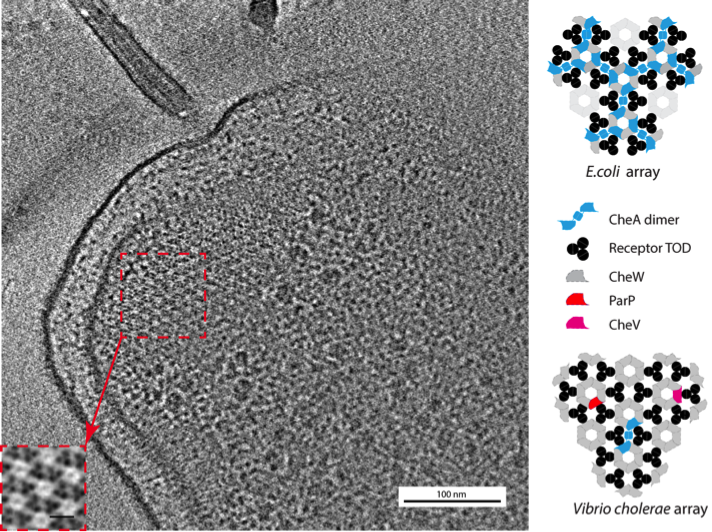Another wonderful collaboration between the Briegel and the Ringgaard labs!
Significance: The chemotaxis array is a macromolecular assembly employed by motile prokaryotes to sense their chemical environment. They share a universal architecture in which trimers of chemoreceptor dimers are arranged in a highly conserved hexagonal array. However, the cluster II arrays in Vibrio cholerae exhibit an underappreciated diversity in their composition. They have low structural stability despite the retention of the canonical receptor packing. Our results demonstrate that chemoreceptor arrays have an unexpectedly high variability in composition among species, a property that likely facilitates the rapid incorporation of different chemotaxis proteins in response to environmental changes. Overall, our results highlight the necessity to better understand chemoreceptor arrays and their biological significance outside the model organism.
Baseplate variability of Vibrio cholerae chemoreceptor arrays
